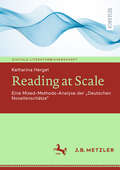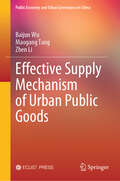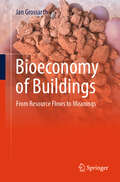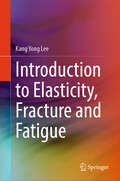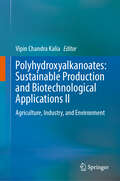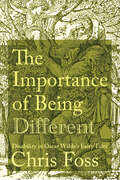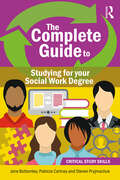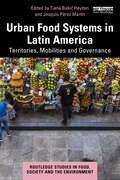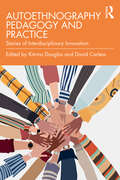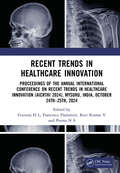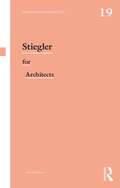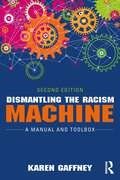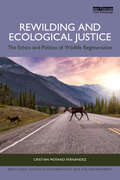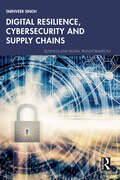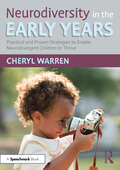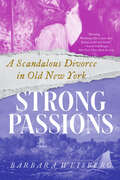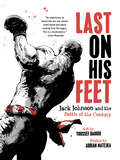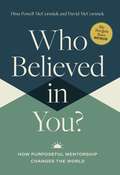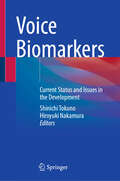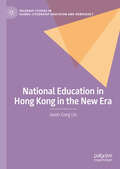- Table View
- List View
Reading at Scale: Eine Mixed-Methods-Analyse der „Deutschen Novellenschätze“ (Digitale Literaturwissenschaft)
by Katharina HergetDie „Novellenschatz“-Reihe Paul Heyses prägt bis heute das deutsche Novellenverständnis: Begonnen mit dem populären „Deutschen Novellenschatz“ wurde ein Sammlungsvorhaben begründet, das eine dezidiert realistische Literaturgeschichte präsentiert. Zusammen mit seinen Fortsetzungen, dem „Novellenschatz des Auslandes“ und dem „Neuen Deutschen Novellenschatz“ ergibt sich ein Korpus aus insgesamt 213 Novellen, das sowohl den (heutigen) Kanon romantischer und realistischer Novellistik als auch das zeitgenössisch Erfolgreiche und Vielgelesene abbildet. In dem Spannungsfeld von realistischem Epochenbewusstsein und programmatischer Bestenauswahl im Angesicht von Massenliteratur erforscht die Studie die „Novellenschatz“-Sammlungen als ‚Arbeit am Kanon‘ – als nicht-narrative Form der Literaturgeschichtsschreibung. Im Mixed-Methods-Verfahren werden hierzu Operationalisierungen verschiedener Skalierungsebenen angewendet, um die Sammlungen und die ihr inhärenten Strukturen zu erfassen: Von hermeneutischen Lektüren über ein Leseexperiment zur heutigen Rezeption realistischer Novellistik hin zu Anwendungen der digitalen Literaturwissenschaft.
Effective Supply Mechanism of Urban Public Goods (Public Economy and Urban Governance in China)
by Baijun Wu Maogang Tang Zhen LiThis book meticulously elaborates on the theory of public goods supply, delving into government supply, market (private) supply, voluntary supply, and multi-stakeholder cooperative supply mechanisms. It conducts a comparative analysis of public goods supply and supply mechanism reforms across various countries. Not only does the book establish a model illustrating the relationship between public goods supply and economic growth, but it also examines the historical evolution of China's urban public goods supply mechanism reform, specifically within Chinese cities. Through this work, the book distills the unique characteristics of China's urban public goods provision and uncovers the underlying issues and influential factors in public goods supply. Additionally, it explores the evolutionary trajectory of urban public infrastructure and public services, analyzing supply mechanisms and performance. Ultimately, the book delves into the policies governing urban public goods supply, analyzing the decision-making mechanisms and influencing factors of these policies, and offering insightful suggestions for ensuring the effective supply of urban public goods in China.
Bioeconomy of Buildings: From Resource Flows to Meanings
by Jan GrossarthThis book looks at how the bioeconomy and circular economy can help make construction more ressource-conserving. The construction sector is at a crossroads, searching for pathways to smarter material use — whether bricks, steel, concrete, or wood. While technical solutions and innovative concepts exist, their widespread adoption lags. This inertia stems not just from technical or economic challenges but also from the deeper, often overlooked layers of social and cultural dynamics: the roles of actors, institutions, and collective perceptions of ecological crises. The book weaves together quantitative insights and qualitative reflections, exploring the rich history of resource-conscious construction while embracing the promise of groundbreaking biotechnological innovations. Can materials like lab-grown bioplastics, innovative cements, recycled components, or renewable resources such as CLT wood and straw bale construction drive progress toward material longevity? What contributions can sustainable architecture — rooted in aesthetics, character, originality, and historical continuity — make to these efforts? What roles do certifications and lifecycle assessments play? This book explores these questions, offering a compelling narrative through the bioeconomy approach, which envisions circular material flows grounded in economic pragmatism. "Since the 1950s, when craftsmanship in construction was replaced by industrial processes, knowledge about the value of materials was supplanted by cheap, poorly applied chemistry. As a result, we built residential developments and suburbs that are not only aesthetically unappealing but also riddled with hazardous waste. [...] This book by Jan Grossarth has several strengths. Firstly, it avoids the trap of suggesting that the future of construction must rely solely on wood and biological materials — eschewing the utopian vision of a 'back to nature' approach to building. Instead, it offers a broad overview of the bewilderingly numerous concepts and ideologies surrounding sustainability, bringing together many promising paths that are emerging in construction." Prof. Michael Braungart
Introduction to Elasticity, Fracture and Fatigue
by Kang Yong LeeThis book includes three big subjects such as elasticity, fracture, and fatigue. The contents came from his lecture notes are delivered to the third- and fourth-grade undergraduate students. To understand what this book talks about, the knowledge of mechanics of materials is required. This book consists of three parts. Part I deals with elasticity and consists of four chapters. Chapter 1 introduces tensor notation. In Chapter 2, three-dimensional governing equations in elasticity are introduced in tensor notation. It includes equilibrium equation, Hooke’s law, relationship between strain and displacement, traction vector, compatibility equations, and Navier’s equilibrium equations. Chapter 3 deals with two-dimensional elasticity. The difference of plane strain state and plane stress state is stated, and the governing equations of each state are obtained from three-dimensional governing equations. In Chapter 4, airy stress functions in Cartesian and polar coordinates are introduced. The transformation method between the governing equations in Cartesian coordinate and polar coordinator is also explained. Part II treats fracture and consists of three chapters. In Chapter 5, the difference between notch and crack, the concept, physical meaning, and importance of stress intensity factor, and theoretical and experimental plastic zone shapes and sizes at the crack tip are explained. In Chapter 6, the standard test method of plane strain fracture toughness is introduced. Chapter 7 deals with fatigue fracture. The standard test method of fatigue crack growth rate is briefly introduced. Part III deals with fatigue subject and has only one chapter, Chapter 8. It explains why fatigue data have scattering band, how to get constant hysteresis loop from random fatigue load, how to get fatigue life, and how to get approximation of S-N curves in metallic and non-metallic materials.
Polyhydroxyalkanoates: Agriculture, Industry, and Environment
by Vipin Chandra KaliaThis book overviews the sustainable production and diverse applications of Polyhydroxyalkanoates (PHAs), with a special focus on agriculture, industry, and the environment. It provides a comprehensive overview of the latest strategies to overcome production challenges and enhance commercial feasibility. By exploring the potential of cost-effective raw materials and genetically engineered microbes, this volume highlights innovative approaches to ferment biowastes efficiently. The book also examines how blending different PHAs and modifying their chemical structures can expand their applications, making it a must-read for those interested in biotechnological advancements. Key concepts covered include the development of biosensors, bio-indicators, and biofuels, as well as the role of biopolymers in environmental bioremediation. The chapters are organized to provide insights into technological bioprocesses that can be translated into globally competitive business proposals. Readers will discover contributions from renowned scholars who probe critical questions about sustainable PHA production and its applications in various industries. This book is essential for researchers, scholars, and practitioners in biotechnology, environmental science, and agricultural engineering. It offers valuable information for those looking to develop eco-friendly solutions and sustainable business models. Whether you are an academic or a professional in the field, this volume provides the latest research and practical insights to help you stay ahead in the rapidly evolving landscape of biopolymers.
The Importance of Being Different: Disability in Oscar Wilde's Fairy Tales (Peculiar Bodies)
by Chris FossUnderstanding Oscar Wilde&’s characteristically unique approach to writing difference Over the course of his remarkable career, Oscar Wilde published two volumes of fairy tales: The Happy Prince and Other Tales and A House of Pomegranates. Both collections feature numerous stories with protagonists who may be said to be disability-aligned, owing to their pronounced physical differences. In The Importance of Being Different, Chris Foss explores the way that Wilde&’s stories problematically replicate many of the Victorian era&’s typical responses to disability but also the ways they diverge, offering a more progressive orientation—both through more sympathetic identifications with disability-aligned characters and through a self-conscious foregrounding of the mechanisms of pity and the consumption of pain. The first ever monograph to examine Wilde&’s work through a disability studies lens, this groundbreaking book encompasses all of his fairy tales as well as his writings during and after imprisonment. Even though Wilde unflinchingly represented the extent to which these peculiar bodies suffered rejection by society, he encouraged his readers to embrace them and to advocate for emotional responses that engage love and kindness toward both individual transformation and social change.
Spectacle Earth: Media for Planetary Change (Cultural Frames, Framing Culture)
by Andrew KalaidjianArtistic, literary, and technological depictions of the climate crisis and how they influence humanity&’s response What does it mean to watch a disaster unfold? Does exposure to a source of dread spur people to action or lull them into fatalism and complacency? Andrew Kalaidjian takes up these and other vital questions in Spectacle Earth, a lively and wide-ranging consideration of media engagement, passivity, and virtual environments in relation to ecological crises and climate change. Kalaidjian begins by tracing the long trajectory of environmental aesthetics and natural sciences that have led up to the Anthropocene. He then looks at the lessons learned from artist and activist movements of the 1960s and 1970s before laying out the new challenges in the digital age of artificial intelligence, cloud computing, and virtual reality. The result is groundbreaking, offering readers a new media literacy that goes beyond individual therapeutic experience to provide forms of expression that can lead to the sorts of solidarity and connection needed to change the planet for the better.
The Complete Guide to Studying for your Social Work Degree (Critical Study Skills)
by Patricia Cartney Jane Bottomley Steven PryjmachukA one-stop guide for social work students that offers extensive study support and skills development.In this comprehensive guide, we cover four key areas all tailored specifically for social work: Studying for your Social Work Degree Academic Writing and Referencing Communication Skills, and Critical Thinking Skills. The compendium includes up to date coverage of all the relevant study skills required to succeed in a social work degree - including: the structure and culture of a social work degree, adopting a reflective and critical approach, and how to find your academic 'voice'. This book is also packed with tasks and numerous examples to aid student understanding, so learners can feel confident that they are fully equipped with all they need to maximise their potential.
Urban Food Systems in Latin America: Territories, Mobilities and Governance (Routledge Studies in Food, Society and the Environment)
by Tiana Bakić Hayden Joaquín Pérez MartínDrawing on a range of case studies from across Latin America, this book highlights the ways that urbanization shapes the food systems that feed this region’s cities, approaching the problem of food in cities as a particularly urban problem.Latin America is the most urbanized area in the world, with nearly 80% of the population living in cities, where rates of food and nutritional insecurity are persistently high, and where the social and spatial organization is characterized by inequality and segregation. The broader questions addressed in this volume are as follows: How do the specific processes and dynamics of Latin American urbanization influence or shape food systems? How can urban food systems develop forms of governance that supports food security and sustainability? After a general introduction, this volume is organized into three main sections: Territories, mobilities, and governance. The chapters consider how specific elements such as urban planning, zoning, migration, gentrification, informal settlements, logistics, retailers, wholesale markets and street vendors, among others, contribute to shaping how food is distributed, sold, and bought in cities. Drawing on studies and theoretical approaches written by scholars and practitioners from Argentina, Brazil, Chile, Ecuador and Mexico, this book provides a Latin American perspective on global discussions surrounding the role of cities in ensuring food access to urban populations.This volume will be of great interest to students, scholars, and policymakers interested in food systems, urban food, urban planning, sustainable urban development, and Latin American studies.
Autoethnography Pedagogy and Practice: Stories of Interdisciplinary Innovation
by Kitrina Douglas David CarlessAutoethnography Pedagogy and Practice supports and generates new insights into how autoethnography can be taught, supervised and practised by sharing the experiences and reflections of researchers from a wide range of fields and disciplines.An international cast of leading researchers provide practical examples of how autoethnography can be successfully introduced into health and human sciences curricula, showcasing examples of the power of autoethnography within and beyond academia. By privileging contributors’ experiences within their own field of study as students, teachers, supervisors and researchers, this book explores how autoethnography can be introduced, nurtured and sustained in challenging academic environments. Each chapter considers three interrelated areas: Disciplinary Contexts, which examines autoethnography’s impact across different fields; Relationships, which considers how to successfully manage relational and care dynamics from undergraduate through professor levels; and Ethics, which addresses the many ethical considerations that can arise across a wide range of contexts.Autoethnography Pedagogy and Practice is a book that encourages readers to engage in autoethnographic practice to create innovative, dialogical and collaborative texts that push the boundaries of polyvocality and diversity within their own disciplines. It will be of interest to researchers in Psychology, Medicine, Pharmacology, Allied Health, Nursing, Mental health, Sport and Exercise Science, Coaching, Sociology, Psychotherapy, Theatre Studies and Communication Studies.
Recent Trends in Healthcare Innovation: Proceedings of the Annual International Conference on Recent Trends in Healthcare Innovation (AICRTHI 2024), Mysuru, India, October 24th–25th, 2024
by H L Gururaj Francesco Flammini V Ravi Kumar N S PremaThe proceedings of the Annual International Conference on Recent Trends in Healthcare Innovation (AICRTHI 2024) is a compilation of groundbreaking research and advancements in healthcare technology, artificial intelligence, and collaborative healthcare solutions. It serves as a comprehensive reference guide for emerging trends and challenges in modern healthcare innovation. Drawing on research contributions from experts in academia, industry, and healthcare institutions worldwide, this volume highlights technological breakthroughs in medicine, their implications for patient care, and their potential to reshape the future of global healthcare. It explores collaborative frameworks between technology providers and healthcare practitioners to address pressing healthcare challenges and improve overall public health outcomes. The peer-reviewed papers contained in this book address critical themes in healthcare innovation, with a focus on: integration of artificial intelligence and machine learning in medical diagnostics advancements in telemedicine and wearable technologies innovations in public health and epidemiology sustainable healthcare practices This is a valuable resource for healthcare professionals, researchers, academics, and students specializing in healthcare innovation, biomedical engineering, and public health. It is also ideal for policymakers, technologists, and industry leaders interested in leveraging emerging technologies for enhanced healthcare delivery.
Stiegler for Architects (Thinkers for Architects)
by David CapenerIn the late 1970s Bernard Stiegler was arrested for armed robbery and imprisoned. Whilst on hunger strike he was given his own cell where, in solitude, he began to study philosophy until his release in 1983. By 1993, under the supervision of Jacques Derrida, he completed his PhD, which was published a year later as Volume 1 of the Technics and Time series. Stiegler went on to become one of the most influential philosophers of the twenty-first century.Stiegler for Architects is the first introduction to the key concepts and ideas of Bernard Stiegler that are relevant to architects. The book asks to what extent it might be possible to have a right to the city in our age of contemporary algorithmic technology. The book begins with a hypothesis: The philosophy of Bernard Stiegler provides an adequate methodology by which we might understand the effects of contemporary digital technology. Second, the fundamental basis of Stiegler’s philosophy is introduced—human evolution is not possible apart from technology. Third, the book introduces how his work might be used to think about the city in our contemporary technological age.The book concludes that the question of the extent to which the right to the city is possible in our contemporary technological age is a question of the extent to which it is possible to prescribe a therapeutics that is capable of being a cure—one that acts across the multiple scales upon which algorithmic technologies operate. This book is essential reading for any architect or designer who is interested in how contemporary digital technology affects everyday life in the city, or anyone wrestling with Stiegler’s ideas.
Dismantling the Racism Machine: A Manual and Toolbox
by Karen GaffneyThis significantly updated second edition serves students and general readers alike who seek to learn what is often not taught, a basic history of race and racism in the US. If we are to dismantle systemic racism and create a more just society, people need a place to begin.This accessible, introductory, and interdisciplinary guide can be one such place. Grounded in critical race theory, this book uses the metaphor of the Racism Machine to highlight that race is a social construct and that racism is a system of oppression based on invented racial categories. It debunks the false ideologies that race is biological, that race has always existed, that systemic racism is over, and that anti‑White racism is real. As a manual, this book presents clear instructions for understanding the history of race and how a small elite created a racial hierarchy to protect their power through a divide‑and‑conquer strategy that lives on today.As a toolbox, this book provides a variety of specific action steps that readers can take to address racism in a post‑civil rights era where extremists have weaponized the study of race and racism.
Rewilding and Ecological Justice: The Ethics and Politics of Wildlife Regeneration (Routledge Studies in Conservation and the Environment)
by Cristian Moyano-FernándezThis book presents rewilding as a matter of ecological justice. To date, most books and articles on rewilding have viewed this concept through the lens of environmental science, while others have analyzed it from a political, ethical, and philosophical perspective. However, little attention has so far been paid to the justice angle of rewilding. Why and how should justice for rewilding be articulated? In order to address this question, Rewilding and Ecological Justice delves into the capabilities approach extended to nonhumans, distributive theories of ecological justice, welfare biology strategies applied to wildlife, environmental virtues, philosophies of recognition and identity, and decolonial studies. By discussing these narratives, this book is able to outline a roadmap indicating the key factors which should be considered in a justice approach to wildlife regeneration. Given the current and worsening socioecological crisis, rewilding initiatives are likely to increase, so this book explores how to ensure that their development is just for all, inclusive of both humans and nonhumans, drawing on examples from across the globe.This book will be of great interest to students and scholars of rewilding, ecological ethics and justice, environmental philosophy, biodiversity conservation, and ecological restoration.
Digital Resilience, Cybersecurity and Supply Chains (Business and Digital Transformation)
by Tarnveer SinghIn the digital era, the pace of technological advancement is unprecedented, and the interconnectivity of systems and processes has reached unprecedented levels. While this interconnectivity has brought about numerous benefits, it has also introduced new risks and vulnerabilities that can potentially disrupt operations, compromise data integrity, and threaten business continuity. In today's rapidly evolving digital landscape, organisations must prioritise resilience to thrive. Digital resilience encompasses the ability to adapt, recover, and maintain operations in the face of cyber threats, operational disruptions, and supply chain challenges. As we navigate the complexities of the digital age, cultivating resilience is paramount to safeguarding our digital assets, ensuring business continuity, and fostering long-term success. Digital Resilience, Cybersecurity and Supply Chains considers the intricacies of digital resilience, its various facets, including cyber resilience, operational resilience, and supply chain resilience. Executives and business students need to understand the key challenges organisations face in building resilience and provide actionable strategies, tools, and technologies to enhance our digital resilience capabilities. This book examines real-world case studies of organisations that have successfully navigated the complexities of the digital age, providing inspiration for readers’ own resilience journeys.
Neurodiversity in the Early Years: Practical and Proven Strategies to Enable Neurodivergent Children to Thrive
by Cheryl WarrenHow we support children in their early years to understand, to be accepted for their unique differences and to thrive, has a life-long impact. With a neuro-affirming, strength-based narrative running throughout, this accessible book will improve your knowledge, skillset and practical application of high-quality neuro-inclusive practice.In exploring the best practice to assist young neurodivergent children navigating the world, these eight succinct chapters will: Explore key topics, including how to create an environment to enable children to feel safe in your space Provide advice on how to work in a connective partnership with parents to enable a family to thrive, and how to create a whole setting approach to neuro-inclusion Include a range of first-hand accounts and case studies to bring theory to life Suggest a wealth of strategies that can be easily applied and will ensure that all children feel safe, connected and can achieve Neurodiversity in the Early Years enables the reader to embrace and embed knowledge and to advocate for a change which will provide neurodivergent children with the foundations of belonging, acceptance and a celebration of who they are. It will be key reading for all early years educators working with children from 2 to 5 years old.
Flower Day: A Story of 24 Hours and 24 Floral Lives (Earth Day)
by Sandra KnappAn illustrated hourly guide that spotlights twenty-four flowers as they attract pollinators, resist predators, and survive on our changing planet. Is it 4 AM or chicory o’clock? In this short book, botanist and award-winning author Sandra Knapp walks us through a day in a global garden. Each chapter of Flower Day introduces a single flower during a single hour, highlighting twenty-four different species from around the world. Beginning at midnight in the Americas, we spot the long tubular flowers of the moonflower, Ipomoea alba; they attract a frenzy of hawk moths before the dawn arrives and the flowers wither and collapse. As day breaks, dandelions and chicory open their heads—actually made up of many individual flowers tightly packed together—and flies and bees visit to get the energy they need to lay eggs and raise their young. Later, at eight o’clock in the morning, the sun rises over the watery Amazon basin, and we meet the giant waterlily, slowly turning from white to pink and purple. Trapped inside are the beetles who feasted on the flowers during the night. That evening, at seven o’clock, we travel to the Caribbean to smell night-blooming jessamine’s powerful—some may say nauseating—sweet scent. But this member of the nightshade family isn’t just a thing of beauty—it has a reputation as both a poison and invasive species, crowding out endangered native trees. For each hour in our flower day, celebrated artist Katie Scott has depicted these scenes with gorgeous pen-and-ink illustrations. Working closely together to narrate and illustrate these unique moments in time, Knapp and Scott have created an engaging read that is a perfect way to spend an hour or two—and a true gift for amateur botanists, gardeners, and anyone who wants to stop and appreciate the flowers.
The Business of Being a Writer, Second Edition (Chicago Guides to Writing, Editing, and Publishing)
by Jane FriedmanA thoroughly revised edition of the comprehensive guide to building and maintaining a successful career in writing. Writers talk about their work in many ways: as an art, as a calling, as a lifestyle. Too often missing from these conversations is the fact that writing is also a business, and those who want to make a living from their writing must understand the basic business principles underlying the industry. The Business of Being a Writer offers the business education writers need but so rarely receive. Jane Friedman is one of today’s leading experts on the publishing industry. Through her website, social media presence, online courses, email newsletters, and other media, she helps writers understand how to navigate the industry with confidence and intentionality. This book advises writers on how to build a platform in a way that aligns with their values, how to spot critical mindset issues that might sabotage their efforts before they even begin, how to publish strategically, and what it means to diversify income streams beyond book sales. For this second edition, Friedman has updated every topic to reflect how the industry has evolved over the past half decade. New features include a section on business and legal issues commonly faced by writers, exercises at the end of each chapter, and a wealth of sample materials posted on a companion website. Reaching beyond the mechanical aspects of publishing, The Business of Being a Writer will help both new and experienced writers approach their careers with the same creative spirit as their writing. Friedman is encouraging without sugarcoating reality, blending years of research with practical advice that will help writers market themselves and maximize their writing-related income. Her book will leave them empowered, confident, and ready to turn their craft into a sustainable career.
Another Bullshit Night in Suck City: A Memoir
by Nick FlynnThe 20th anniversary edition of "a remarkable feat: a clear-eyed, inventive, and astonishingly honest guided tour of hell." —Elissa Schappel, Vanity Fair Nick Flynn met his father when he was working as a caseworker in a homeless shelter in Boston. Another Bullshit Night in Suck City tells the story of the trajectory that led Nick and his father onto the streets, into that shelter, and finally to each other. The 20th anniversary edition, which features a foreword by Andre Dubus III, will introduce this modern classic to a new generation of readers.
This Is Salvaged: Stories
by Vauhini VaraWinner of the High Plains Book Award Longlisted for the Story Prize and the Mark Twain American Voice in Literature Award One of The New Yorker’s Best Books of the Year "Masterfully makes anew what it feels like to be alive.” —Jonathan Escoffery, The New York Times Book Review Pushing intimacy to its limits in prose of unearthly beauty, Vauhini Vara explores the nature of being a child, parent, friend, sibling, neighbor, or lover, and the relationships between self and others. A young girl reads the encyclopedia to her elderly neighbor, who is descending into dementia. A pair of teenagers seek intimacy as phone-sex operators. A competitive sibling tries to rise above the drunken mess of her own life to become a loving aunt. One sister consumes the ashes of another. And, in the title story, an experimental artist takes on his most ambitious project yet: constructing a life-size ark according to the Bible’s specifications. In a world defined by estrangement, where is communion to be found? The characters in This Is Salvaged, unmoored in turbulence, are searching fervently for meaning, through one another.
Strong Passions: A Scandalous Divorce in Old New York
by Barbara Weisberg“Riveting.… Weisberg tells a story that fiction could not touch.” —Liesel Schillinger, New York Times Book Review? Shocking revelations of a wife’s adultery explode in an incendiary nineteenth-century trial, exposing upper-crust New York society and its secrets. What could possibly go wrong in a wealthy matriarch’s country home when her dilettante son, his restless wife, and his widowed brother live there together? Strong Passions, rooted in the beguiling times of Edith Wharton’s “old New York,” recounts the true story of a tumultuous marriage. In 1862, Mary Strong stunned her husband, Peter, by confessing to a two-year affair with his brother. Peter sued Mary for divorce for adultery—the only grounds in New York—but not before she accused him of forcing her into an abortion and having his own affair with the abortionist. She then kidnapped their young daughter and disappeared. The divorce trial Strong v. Strong riveted the nation during the final throes and aftermath of the Civil War, offering a shocking glimpse into the private world of New York’s powerful and privileged elite. Barbara Weisberg presents the chaotic courtroom and panoply of witnesses—governess, housekeeper, private detective, sisters-in-law, and many others—who provided contradictory and often salacious testimony. She then asks us to be the jury, deciding each spouse’s guilt and the possibility of a just resolution. Social history at its most intimate, Strong Passions charts a trial’s twists and turns to portray a family and country in turmoil as they faced conflicts over women’s changing roles, male custody of children, and men’s power—financial and otherwise—over wives.
Last on His Feet: Jack Johnson And The Battle Of The Century
by Youssef Daoudi Adrian MatejkaA groundbreaking graphic portrait of boxing legend Jack Johnson, Last on His Feet offers a front-row seat to the Battle of the Century. On the morning of July 4, 1910, thousands of boxing fans stormed a newly built stadium in Reno, Nevada, to witness an epic showdown. Jack Johnson, the world’s first Black heavyweight champion—and most infamous athlete in the world because of his race—was paired against Jim Jeffries, a former heavyweight champion then heralded as the “great white hope.” It was the height of the Jim Crow era, and spectators were eager for Jeffries to restore the racial hierarchy that Johnson had pummeled with his quick fists. Transporting readers directly into the ring, artist Youssef Daoudi and poet Adrian Matejka intersperse dramatic boxing action with vivid flashbacks to reveal how Johnson, the self-educated son of formerly enslaved parents, reached the pinnacle of sport—all while facing down a racist justice system. Through a combination of breathtaking illustrations and striking verse, Last on His Feet honors a contentious civil rights figure who has for more than a century been denied his proper due.
Who Believed in You: How Purposeful Mentorship Changes the World
by David McCormick Dina Powell McCormickINSTANT NEW YORK TIMES BESTSELLER • Unleash the power of transformative mentorship. You can change somebody&’s life—and that can change the world.During the pandemic, Dina Powell McCormick and David McCormick watched as many Americans—including their six teenage daughters—were left feeling devoid of human connection and without the advice and guidance of mentors.Recognizing the need in front of them, Dina and Dave interviewed successful leaders who stood on the shoulders of their mentor giants—people who saw something in them they may not have seen in themselves—and helped them find and achieve their purpose in life.The book features stories from some of the most influential leaders across the country sharing how their mentors changed their lives, including Satya Nadella, the CEO of Microsoft; Tory Burch, the founder of the women&’s fashion empire; Hollywood producer Brian Grazer; as well as political leaders such as Arkansas Gov. Sarah Huckabee Sanders, Maryland Gov. Wes Moore, and former Secretary of State Condoleezza Rice.Who Believed in You unpacks the four critical elements of transformative mentorship—mutual trust, shared values, meaningful commitment, and the importance of instilling confidence—and offers guideposts and powerful illustrations from actual mentorship journeys that both show the way and inspire.This book is just the beginning. Dina and Dave are starting a movement, encouraging leaders to share their stories of who believed in them and what advice they&’re giving their mentees today.Through unleashing the power of transformative mentorship, you can change someone&’s life—and that can change the world.
Voice Biomarkers: Current Status and Issues in the Development
by Shinichi Tokuno Hiroyuki NakamuraThis book presents the latest research on speech biomarkers and demonstrates the benefits of quantitative measurement technology for emotion and stress in clinical settings. It begins with an introduction and details the validation of a technique for assessing emotions using voice biomarkers. This technology evaluates stress levels, which affect emotional expression and lead to changes in certain voice qualities. It further explains how a voice emotion recognition system can effectively detect illnesses such as anxiety disorders, depression, bipolar disorder, PTSD, Parkinson’s disease, dementia, and more. Beyond clinical applications, it is also useful for the mental care of athletes and assessing driving skills. Voice biomarkers can be easily, non-invasively, and remotely measured, offering excellent cost efficiency. This book lays the groundwork for addressing unresolved issues and advancing further. "Voice Biomarkers - Current Status and Issues in the Development" is an invaluable resource for healthcare professionals at all levels, especially those involved in pathophysiology, disaster psychology, mental health, and social medicine. Researchers in engineering will also find this book insightful.
National Education in Hong Kong in the New Era (Palgrave Studies in Global Citizenship Education and Democracy)
by Jason Cong LinThis book provides a comprehensive, up-to-date picture of national education in Hong Kong. At the societal level, it offers an in-depth understanding of a divisive issue for Hongkongers, elaborating the official approach so that diverse stakeholders have a basis for re-evaluating the nature and implementation of national education for rational and critical dialogue. At the policy and curricular level, it offers evidence-based suggestions to foster inclusive and reflective decision-making and curriculum development related to national education. At a practical level it facilitates the teaching of national education in schools and helps diverse stakeholders to reflect on how national education relates to them, and what they can do to co-construct an inclusive and reflective national education. The book will interest researchers in multicultural education, national identity, identity politics and China and Hong Kong Studies.
